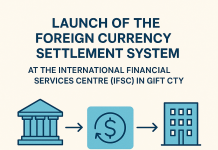Federal officials are actively exploring measures to fortify deposit safeguards amid looming concerns of a potential financial crisis. As reported by Bloomberg News, personnel within the Treasury Department are assessing the feasibility of temporarily increasing the deposit insurance limit beyond the standard $250,000 threshold without requiring explicit Congressional authorization.
While officials currently view such a step as unnecessary, they are nonetheless formulating contingency plans in anticipation of a deepening financial crisis, as indicated by sources familiar with the matter. The recent bankruptcies of Silicon Valley Bank and Signature Bank have intensified anxieties within the banking sector, prompting a proactive stance from regulatory bodies.
In response to the unfolding situation, the Federal Deposit Insurance Corporation (FDIC) has emphasized the importance of thorough examination and evaluation to ensure optimal outcomes for all stakeholders involved. The FDIC’s commitment to maximizing value and identifying optimal solutions underscores the complexity and significance of the challenges facing the banking industry.
Among the potential bidders for distressed banks is First Citizens Bank, known for its track record of successfully acquiring and integrating troubled institutions over the past 14 years. The involvement of established entities like First Citizens Bank signals both confidence in the resilience of the banking sector and a readiness to navigate through turbulent times.
In the context of discussions surrounding an expanded FDIC insurance plan, Bloomberg reports that one avenue under consideration involves leveraging the Treasury Department’s authority to implement emergency measures and tap into resources such as the Exchange Stabilization Fund. This strategic approach reflects a multifaceted response aimed at bolstering confidence in the stability and resilience of the financial system.
As federal officials continue to assess and respond to evolving challenges, the broader implications of potential policy interventions remain subject to ongoing deliberation and scrutiny. Balancing the imperative of safeguarding depositor interests with the need to maintain financial stability poses complex dilemmas that demand careful consideration and proactive measures.
Moreover, the prospect of an enlarged FDIC insurance plan underscores the critical role of regulatory foresight and preparedness in mitigating systemic risks and safeguarding the integrity of the banking sector. By exploring innovative solutions and contingency measures, policymakers seek to reinforce depositor confidence and preemptively address vulnerabilities within the financial system.
Against the backdrop of ongoing economic uncertainties and market fluctuations, the proactive stance adopted by federal officials reflects a commitment to resilience and adaptability in the face of evolving challenges. The pursuit of robust safeguards and contingency plans underscores a collective determination to uphold the stability and integrity of the banking sector, thereby safeguarding the broader economy from systemic shocks.
In conclusion, the exploration of measures to strengthen deposit safeguards underscores the proactive approach of federal officials in addressing potential financial vulnerabilities. As regulatory bodies assess various options and contingencies, the overarching goal remains the preservation of financial stability and depositor confidence in the face of evolving challenges. Through collaborative efforts and strategic interventions, policymakers seek to fortify the resilience of the banking sector and mitigate systemic risks, thereby safeguarding the broader economic well-being.











